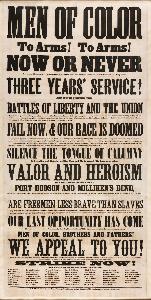Frederick Augustus Washington Bailey
Frederick Augustus Washington Bailey;Frederick Douglass
Place: Cordova
Born: 1817
Death: 1895
Biography:
Frederick Augustus Washington Bailey, also known as Frederick Douglass, was a prominent figure in the 19th century. He was born in 1817 or 1818 in Cordova, Maryland, and became a national leader of the abolitionist movement in Massachusetts and New York.
Early Life and Slavery
Douglass was born into slavery on the Eastern Shore of the Chesapeake Bay in Talbot County, Maryland. His birthplace was likely his grandmother's cabin east of Tappers Corner and west of Tuckahoe Creek. In his first autobiography, Douglass stated: "I have no accurate knowledge of my age, never having seen any authentic record containing it." Douglass's enslaved mother was of African descent and his father, who may have been her master, apparently of European descent; in his Narrative, Douglass wrote: "My father was a white man." According to David W. Blight's 2018 biography of Douglass, "For the rest of his life he searched in vain for the name of his true father."
Artistic Career and Abolitionist Movement
After escaping from slavery in Maryland in 1838, Douglass became a national leader of the abolitionist movement. He gained fame for his oratory and incisive antislavery writings. As an artist, he was known for his paintings, which were often used to promote the cause of abolition. Some of his notable works include Portrait of a Woman in a White Dress by Alexander Pope, and Frederick Douglass by Alexander Hay Ritchie. These paintings are now part of the collection at the New Orleans Museum of Art and the National Museum of African American History and Culture, respectively.
- Important: The Museum William H. Seward House has a collection of artifacts, documents, and photographs related to Douglass's life and career.
- The Washington State Historical Society also has a vast collection of artwork, including paintings and sculptures, that depict Douglass and his family.
- Douglass was an active campaigner for the rights of freed slaves and wrote his last autobiography, Life and Times of Frederick Douglass, which covers his life up to 1895.
Legacy and Impact
Douglass's legacy extends beyond his artistic career. He was a prominent figure in the abolitionist movement and played a crucial role in promoting the rights of African Americans. His writings and speeches continue to inspire people today, and his autobiographies remain an important part of American history. The Museum Anderson House and the Wilberforce House Museum are two institutions that have dedicated themselves to preserving Douglass's legacy. The Washington State Historical Society also has a collection of artifacts and documents related to his life and career. In conclusion, Frederick Augustus Washington Bailey was a talented artist and a prominent figure in the abolitionist movement. His paintings and writings continue to inspire people today, and his legacy remains an important part of American history.

